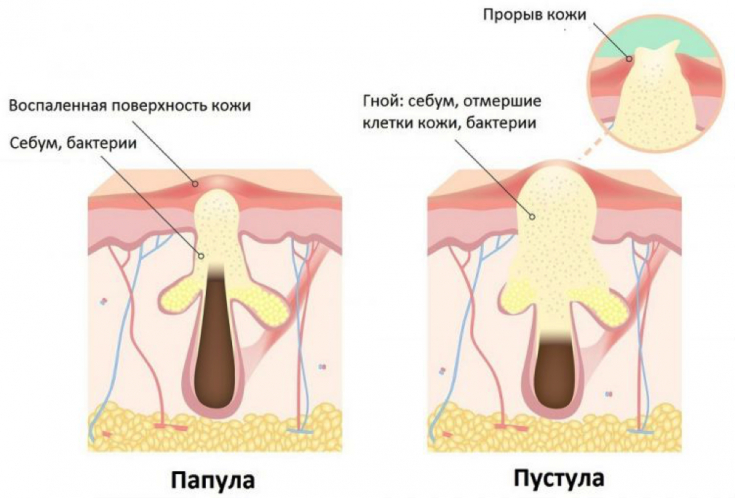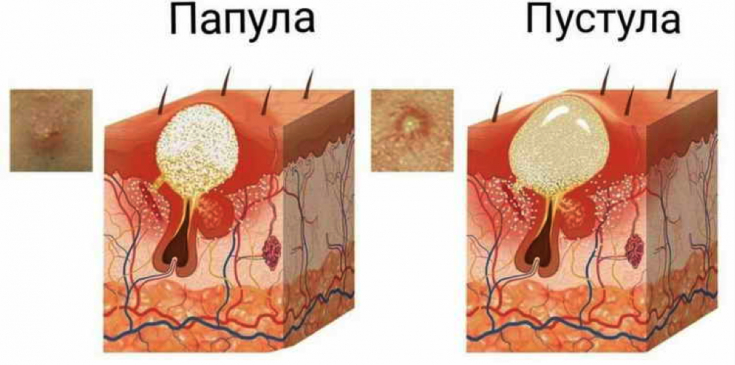Acne – one of the most common reasons for visiting a dermatologist. Until that time, a deep study of the causes and mechanisms of their launch in the event of this pathology is still underway. Therefore, only rational selection of therapy can ensure a successful result in acne treatment.
Read the article on estet-portal.com about the main drugs for topical acne treatment, their features, as well as possible side reactions.
- benzoyl peroxide in acne treatment
- topical retinoids for acne treatment
- topical antibiotics for acne
- systemic acne medications
Benzoyl peroxide in the treatment of acne
Benzoyl peroxide (BP) − an effective topical drug, although only 30% of acne patients received it, according to a survey of acne patients, because doctors preferred prescription drugs. This is due to the release of free oxygen radicals benzoyl peroxide, which effectively reduce the concentration of C. acnes and prevent the emergence of bacterial resistance to therapy.
Subscribe to our page on Facebook!
High drug concentrations (10%) are associated with a greater risk of irritation without significant bactericidal benefits. The combination of benzoyl peroxide with topical retinoids is more effective than either monotherapy.
Retinoids for topical use in the treatment of acne
Retinoids for topical application have comedolytic and anti-inflammatory properties, normalize desquamation of the infundibular part of the follicle. According to studies, they are underappointed by both primary care professionals and dermatologists. The most commonly used are tretinoin, adapalene and tazarotene.
What vitamins are your skin lacking
All retinoids slightly increase photosensitivity, but this effect is easily controlled by sunscreen.
According to the results of clinical trials, various preparations of tretinoin reduce the number of comedones and inflammatory lesions. Using monotherapy with 0.025% tretinoin gel resulted in approximately a 40% reduction in lesions. Follicular biopsy showed that 0.1% tretinoin cream reduced comedones by 50% after 6 weeks.
The Not Sweet Life: How Too Much Glucose Worsens Your Skin
Standard tretinoin formulations are not stable to light and should not be used concomitantly with benzoyl peroxide. Adapalene is stable to light and can be used with BP. For moderate to severe manifestations, a gel containing 0.3% adapalene and 2.5% BP reduced initial acne lesions by 68%.

Comparative studies have shown that adapalene 0.1% gel is as effective as tretinoin 0.025% gel, but has a better safety profile. A randomized comparison of gels containing 0.1% and 0.3% adapalene showed greater high concentration efficacy. Topical antibiotics for acne
Dapson gel is effective in inflammatory acne. It has a
favorable safety profile and is often used in patients with sensitive skin
. A few cases of hemolysis have been reported, especially when co-administered with trimethoprim-sulfamethoxazole, and a case of methemoglobinemia due to accidental use of dapsone in an infant.

Acelainic acid − it is a dicarboxylic acid, inhibits the growth of C. acnes and prevents keratinization disorders. Used for its ability to reduce post-inflammatory hyperpigmentation. May also be used for mild comedones and inflammatory acne.
Systemic acne medications Isotretinoin is highly effective for the treatment of nodular cystic acne, used as a second-line agent for moderate to severe manifestations resistant to other types of drugs.
Specific mechanism of action:
it reduces sebum secretion, C. acnes concentration and inflammation, has a pronounced comedolytic effect.
Case-based post-acne treatment
YouTube channel:







Add a comment